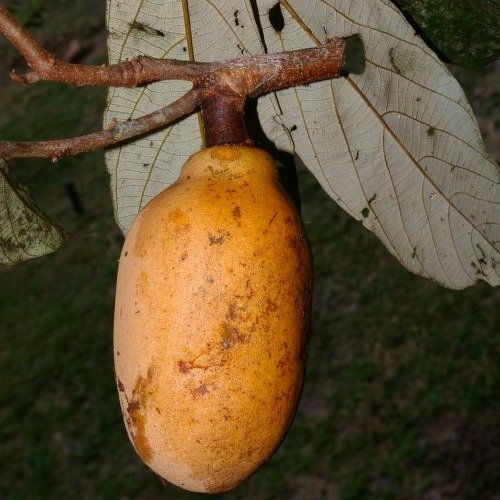Theobroma Subincanum - Cupui
The Theobroma genus derives its name from the Greek theos (God) and broma (food), which translates to "food of the gods." Cupui is an evergreen tree with an elongate, multi-branched crown; usually growing 6 - 12 metres tall but with some specimens reaching 20 metres. The bole is usually 15 - 20cm in diameter, occasionally to 30cm. The edible pulp is often consumed, usually in the form of juices, and greatly enjoyed within the plants native range. The seeds are also sometimes used for chocolate production. The tree is normally harvested from the wild, but it is also sometimes cultivated. The fruits contain a small amount of sweet, succulent pulp surrounding the seeds. It is often made into juices. Deliciously sweet, it is highly valued for juices. The fruit is about 10cm long and 6cm wide.
The Theobroma genus derives its name from the Greek theos (God) and broma (food), which translates to "food of the gods." Cupui is an evergreen tree with an elongate, multi-branched crown; usually growing 6 - 12 metres tall but with some specimens reaching 20 metres. The bole is usually 15 - 20cm in diameter, occasionally to 30cm. The edible pulp is often consumed, usually in the form of juices, and greatly enjoyed within the plants native range. The seeds are also sometimes used for chocolate production. The tree is normally harvested from the wild, but it is also sometimes cultivated. The fruits contain a small amount of sweet, succulent pulp surrounding the seeds. It is often made into juices. Deliciously sweet, it is highly valued for juices. The fruit is about 10cm long and 6cm wide.
The Theobroma genus derives its name from the Greek theos (God) and broma (food), which translates to "food of the gods." Cupui is an evergreen tree with an elongate, multi-branched crown; usually growing 6 - 12 metres tall but with some specimens reaching 20 metres. The bole is usually 15 - 20cm in diameter, occasionally to 30cm. The edible pulp is often consumed, usually in the form of juices, and greatly enjoyed within the plants native range. The seeds are also sometimes used for chocolate production. The tree is normally harvested from the wild, but it is also sometimes cultivated. The fruits contain a small amount of sweet, succulent pulp surrounding the seeds. It is often made into juices. Deliciously sweet, it is highly valued for juices. The fruit is about 10cm long and 6cm wide.


